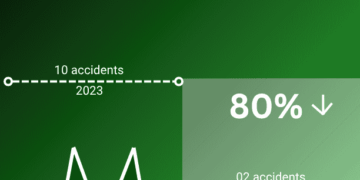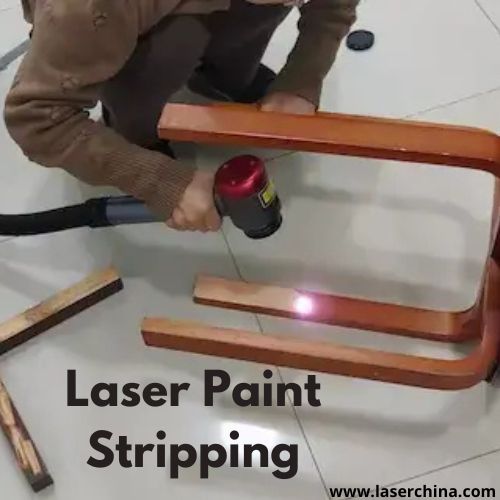In the world of industrial and commercial surface treatment, the demand for clean, precise, and eco-friendly methods has pushed companies to rethink traditional approaches. One such innovation capturing attention is laser paint stripping. But can this method really strip coatings without harming the surface beneath? Let’s explore this question through a comprehensive lens, examining how this process works, where it’s applied, and why industries are steadily adopting it as a standard.
What Is Laser Paint Stripping?
Laser paint stripping is a non-contact, non-abrasive method of removing coatings, paints, oxides, or contaminants from a surface using high-intensity laser beams. Unlike sandblasting or chemical treatments, this method doesn’t require any chemicals or media. Instead, it uses a concentrated beam of light to heat and break the bond between the paint and the substrate.
The core of this method lies in the principle of thermal decomposition. The laser is tuned to a specific wavelength that is strongly absorbed by the paint or coating material. As the laser beam interacts with the surface, it heats the paint quickly, causing it to vaporize or sublimate. This leaves the base material — whether it’s metal, composite, or another substrate — largely untouched.
How Laser Paint Stripping Works
The process begins with the calibration of the laser system to match the type of coating and the substrate. Operators can control:
- Laser power and intensity
- Pulse duration and frequency
- Scanning speed and focus diameter
This precision is what gives laser paint stripping its edge over traditional methods. By customizing these parameters, operators can remove specific layers of paint without impacting the structural integrity of the underlying material.
Once activated, the laser beam is directed at the coated surface. The heat generated is intense and highly localized, breaking down the paint almost instantaneously. A vacuum system is usually attached near the working head to collect the resulting fumes and debris, ensuring a clean working environment.
Applications Across Industries
The versatility of laser paint stripping makes it suitable for a wide range of industries:
Aerospace Industry
Aircraft maintenance requires extremely careful surface treatment due to the sensitivity of aerospace materials. Laser stripping allows technicians to remove paint without weakening aluminum and composite structures.
Automotive Sector
In the automotive world, precision matters. Car manufacturers and restoration specialists use laser stripping to remove layers of paint without disturbing the fine contours of car panels or risking corrosion.
Shipbuilding and Marine Maintenance
Marine vessels face constant exposure to harsh environments, leading to frequent repaints. Laser paint stripping is being explored to maintain steel hulls and deck surfaces without the mess of sandblasting.
Military and Defense
For military equipment, camouflage coatings and protective layers often need removal for inspection or repainting. Laser systems provide a clean, precise solution that maintains the integrity of sensitive components.
Art Restoration and Conservation
The fine control of lasers allows conservators to delicately strip paint layers without damaging historic artifacts or sculptures — a level of precision that’s impossible with harsh chemical or mechanical methods.
Safety and Environmental Impact
In many industries, safety and environmental regulations are becoming increasingly strict. Traditional methods like chemical strippers pose several risks, including toxic fumes, spills, and disposal concerns. Similarly, abrasive blasting can generate significant dust and waste.
Laser paint stripping addresses many of these concerns by:
- Reducing or eliminating the use of solvents
- Producing minimal waste
- Offering better containment of airborne particles through integrated vacuum systems
Additionally, laser systems can often be automated, reducing direct operator exposure and improving workplace safety.
Surface Integrity and Precision
One of the most common misconceptions about laser paint stripping is that it may damage the surface underneath. However, the truth lies in the science. Laser systems can be precisely controlled to target the paint only, avoiding excess heat transfer to the substrate. Metals like aluminum, steel, and titanium respond especially well to this technique.
For example, in aircraft maintenance, the laser can be calibrated to remove just the polyurethane coating while preserving the underlying primer layer. Similarly, in car body shops, laser systems can remove clear coat or topcoat selectively, enabling spot repairs or customization.
The use of advanced sensors and feedback systems ensures that the laser’s intensity and duration are constantly adjusted based on the surface being treated. This real-time control is what enables high accuracy and repeatability — a hallmark of modern laser paint stripping machines.
Integration with Modern Manufacturing
Incorporating laser paint stripping into an automated production line is increasingly feasible with advancements in robotics and control systems. Laser heads can be mounted on robotic arms, enabling seamless integration with existing manufacturing cells. This automation brings additional benefits like:
- Reduced labor costs
- Consistent stripping quality
- Faster turnaround times
- Enhanced traceability through digital monitoring
Industries focused on lean manufacturing and smart factory solutions find laser systems especially attractive for their flexibility and ability to work in sync with other digital systems.
Limitations and Considerations
While laser paint stripping offers numerous advantages, it’s important to consider the context of use. The initial investment in equipment can be higher than traditional methods. However, the return on investment is often justified through:
- Lower operational costs over time
- Minimal maintenance requirements
- Reduced need for protective gear or hazardous waste handling
- Higher precision and product quality
Before adopting the technology, companies should conduct sample tests on the materials and coatings they intend to strip. Manufacturers of laser systems often provide this testing service to help clients determine optimal settings and ensure compatibility.
Future Prospects
As sustainability and precision become more important across global industries, laser paint stripping is poised to play a larger role. Manufacturers are developing more compact, affordable systems suited for small to medium businesses. Portable handheld models are also entering the market, giving users on-site stripping capabilities for field repairs, mobile workshops, and off-grid locations.
Moreover, the software that powers these systems continues to evolve, offering advanced diagnostics, predictive maintenance, and remote operation. These enhancements not only improve performance but also lower the barrier to adoption for companies new to laser technologies.
Final Thoughts
The answer to the tricky question — can laser paint stripping remove coatings without damaging the surface? — is a definitive yes, provided the system is correctly set up and matched to the material. This method is not just a trend; it’s a forward-looking solution that combines safety, sustainability, and technical excellence.
Whether you’re in aerospace, automotive, manufacturing, or restoration, laser paint stripping offers a clean, efficient, and highly controllable way to meet today’s surface preparation needs. Its growing adoption is a clear sign that industries are moving toward smarter, cleaner, and more precise technologies.
If you’re ready to explore how laser paint stripping can fit into your process, consider reaching out to a reputable manufacturer or supplier for a demo — you might just discover the most efficient upgrade your workflow has ever seen.


















